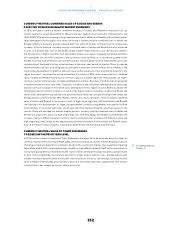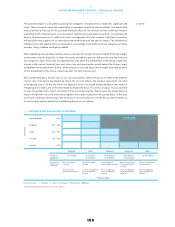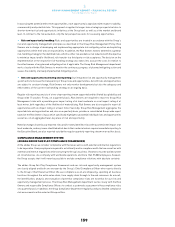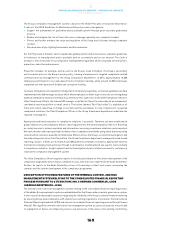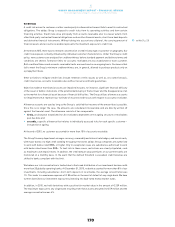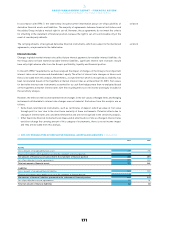Reebok 2015 Annual Report Download - page 165
Download and view the complete annual report
Please find page 165 of the 2015 Reebok annual report below. You can navigate through the pages in the report by either clicking on the pages listed below, or by using the keyword search tool below to find specific information within the annual report.GROUP MANAGEMENT REPORT – FINANCIAL REVIEW
Risk and Opportunity Report
161
3
Taxes, Treasury, Planning, Reporting and Legal, focusing on the identification, assessment, treatment,
monitoring and reporting of financial reporting risks. Clearly defined responsibilities are assigned to each
distinct sub-process. In a first step, the internal control and risk management system serves to identify
and assess as well as to limit and control risks identified in the consolidated financial reporting process
which might result in our consolidated financial statements not being in conformity with internal and
external regulations.
Internal Control over Financial Reporting (ICoFR) serves to provide reasonable assurance regarding the
reliability of reporting and compliance with applicable laws and regulations despite identified financial
reporting risks. To monitor the effectiveness of ICoFR, the Group Policies & Internal Controls department
and the Group Internal Audit department regularly review accounting-related processes. Additionally, as
part of the year-end audit, the external auditor selects and examines internal controls, including IT controls,
to assess their effectiveness. The Audit Committee of the adidas AG Supervisory Board also monitors the
effectiveness of ICoFR. However, due to limitations of ICoFR, even with appropriate and functional systems
absolute certainty about the effectiveness of ICoFR cannot be guaranteed.
All Group companies are required to comply with the consolidated financial reporting policies (Group
Finance Manual), which are available to all employees involved in the financial reporting process through
the Group-wide intranet. We update the Group Finance Manual on a regular basis, dependent on regulatory
changes and internal developments. Changes to the Group Finance Manual are promptly communicated to
all Group companies. Clear policies serve to limit employees’ scope of discretion with regard to recognition
and valuation of assets and liabilities, thus reducing the risk of inconsistent accounting practices within
the Group. We aim to ensure compliance with the Group Finance Manual through continuous adherence
to the four-eyes principle in accounting-related processes. In addition, each quarter, the local manager
responsible for the accounting process within the respective Group company and the respective local
Managing Director confirm adherence to the Group Finance Manual and to IFRS in a signed representation
letter to Group Accounting.
The accounting for Group companies is conducted either locally or by an adidas Group Shared Service
Centre. Most of the IT ERP systems used are based on a Group-wide standardised SAP system. Some Group
companies use Navision-based ERP software. As part of an initiative aimed at harmonising our system
infrastructure (One ERP), we will also introduce an SAP-based ERP system within these Group companies
in the medium term. Following approval by the Finance Director of the respective Group company, the local
financial statements are transferred to a central consolidation system based on SAP SEM-BCS. At Group
level, the regularity and reliability of the financial statements prepared by Group companies are reviewed
by Group Accounting and Controlling. These measures include automated validations in the system as
well as the creation of reports and analyses to ensure data integrity and adherence to the reporting logic.
In addition, differences between current year and prior year financial data as well as budget figures are
analysed on a market level. If necessary, the Group seeks the opinion of independent experts to review
business transactions that occur infrequently and on a non-routine basis. After ensuring data plausibility,
the centrally coordinated and monitored consolidation process begins, running automatically on SAP
SEM-BCS. Controls within the individual consolidation steps, such as those relating to the consolidation
of debt or of income and expenses, are conducted both manually and system-based, using automatically
created consolidation logs. Any inadequacies are remedied manually by systematically processing the
individual errors as well as differences and are reported back to the Group companies. After finalisation of
all consolidation steps, all items in the consolidated income statement and in the consolidated statement
of financial position are analysed with respect to trends and variances. Unless already otherwise clarified,
the Group companies are asked to explain any identified material deviations.
All financial systems used are protected against malpractice by means of appropriate authorisation
concepts, approval concepts and access restrictions. Access authorisations are reviewed on a regular
basis and updated if required. The risk of data loss or outage of accounting-related IT systems is minimised
through central control and monitoring of virtually all IT systems, centralised management of change
processes and regular data backups.



